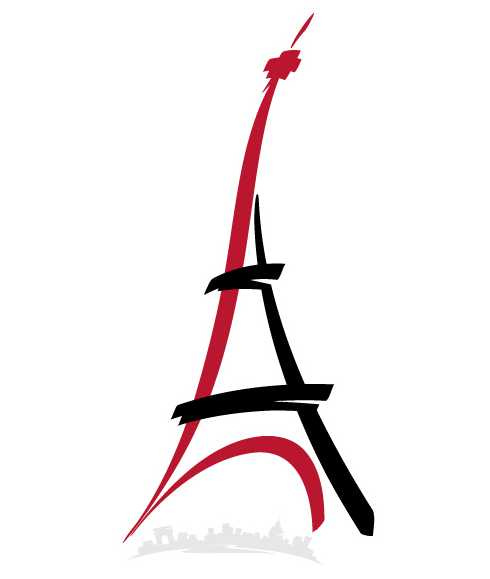Pictures of reality
A different way of thinking about truth
To paint a broad picture, over the past 60 years there have been two competing philosophical attitudes about the nature of truth at play, both within academic debates and our broader culture. There is a positivist or analytic tradition that believes strongly in facts; and a postmodern, critical theory tradition that describes truth in terms of power structures. Different disciplines, subcultures and debates have clustered around each. As they are fundamentally incompatible, we ended up with divided epistemic communities and groups of people talking past each other. Our intellectual filter bubbles have their roots in old debates about the nature of truth and not just social media.
Given this philosophical impasse, this post is going to wander down to the level of everyday statements to consider how we understand the nature of truth. There is a neglected approach within twentieth century philosophy that sheds an interesting light on the topic.
Two attitudes about truth
The positivist attitude about truth was previously touched on in the post on misinformation where we explored the epistemic confidence that underlies common thinking about misinformation. As noted there, this confidence is expressed in the cultural significance given to various fact checkers. The assumption is that, for any given statement or claim, we can make a definitive arbitration as to whether it is true or false. This assumption that statements are either true or false, even if we don't always know which, is particularly prevalent in modern understandings of science. Science is thought to tell us what is true or false and all societal debates can and should be decided by the facts.
This way of seeing the world is shared by analytic philosophers and borrows a core assumption from modern logic: every statement is either true or false. Readers who have studied any formal logic, for example, may remember considering sentences like "If P then Q" and then filling out tables where T and F are the only allowable inputs. Moreover, in the analytic tradition of philosophy, for every statement, there is some definite fact of the matter in the world that determines whether the statement is true or false. There is a philosophical theory and debate about 'truthmakers' that explores how this dynamic works.
In contrast and competition to this view is the postmodern approach that was explored in the post on critical theory. Rather than believing in fact checking, this view tends to hold that we each have our own truth or our own reality. That is, there is no definitive truth and what is true varies by person, background or culture. This assumption seems obviously nonsensical to analytic philosophers and many scientists, but is increasingly influential across a range of academic disciplines and within cultural debates.
As currently articulated, this view is a deliberate rejection of positivist approaches and derives from the postmodern rejection of set meanings and coherent meta-narratives. Claims to truth, on this view, are merely the attempts by those in power to impose their preferences on others. The idea is that rejecting any real sense of objective truth empowers those who are currently marginalised to reclaim their own agency. Whole academic disciplines, and the broader tradition of Continental philosophy, have coalesced around this assumption.
On sentences and reality
To test these different assumptions, it is useful to step away from big picture philosophy and, instead, focus in on more practical and local considerations. If correct, these theories should hold in the everyday as well as in academic debates. Doing this can be tricky to accomplish, however, for as soon as we start talking about whether sentences are true or not, our philosophical assumptions tend to come into play.
To get around this, we are going to borrow a metaphor or concept from Ludwig Wittgenstein in his short and quirky book Tractatus Logico-Philosophicus, published in 1921. (Every assertion in the book is, for example, numbered and the numbering denotes logical relationships between different sentences.) Those who know the book may think this is an odd choice, as it advocates a thoroughly and explicitly positivist position (albeit one Wittgenstein later abandoned). Nevertheless, it articulates a distinctive and insightful way of thinking about language and statements that stands by itself.
Before we get to the key insight, it is necessary to explain a particular philosophical term. To logicians and philosophers, a proposition is not something you make in a negotiation, but is (for our purposes) a well defined and unambiguous statement. With that in mind, Wittgenstein claimed that:
4.01 A proposition is a picture of reality.
This metaphor or idea should make significant intuitive sense. Pictures provide a visual description of a world, which may or may not be accurate about reality, and in many cases it doesn't matter. Similarly, propositions or statements provide an image or description of what the world is like, which may or may not be accurate, and our love of fiction (and social media) shows that it often doesn't matter.
In the Tractatus, Wittgenstein adopts a positivist position and asserts a strong view about the epistemic status of pictures:
2.21 A picture agrees with reality or fails to agree; it is correct or incorrect, true or false.
Pictures and truth
Let's test this claim by considering whether a number of pictures agree with reality or not, in this case as pictures of the Eiffel Tower. Here are five pictures to consider.
Picture One (by Jeevan Jose on Unsplash)
Picture 2 (by Baptiste Gousset on Unsplash)
Picture 3 (by Denys Nevozhai on Unsplash)
Picture 4 (taken from elsaerai7.blogspot.com)
Picture 5 (by Dustin Bowdige on Unsplash)
In considering the relationship between these pictures and reality, careful reflection shows it is not nearly as simple as agreement/disagreement or correct/incorrect. We can make a number of observations about the relationship:
Sometimes there is a simple agreement (Pictures 1 and 3 are of the Eiffel Tower) or simple disagreement (Picture 5 is not of the Eiffel Tower).
Even when two (or more) pictures agree with the relevant reality, they may have very little in common and can even seem contradictory. For example, it isn’t obvious that Pictures 1 and 3 are of the same building (albeit from very different perspectives).
Sometimes there isn’t a clear agreement or disagreement and we would qualify statements about this with ‘Yes, but …..’ or ‘Not really, but kind of’. Different readers may have different intuitions about whether Pictures 2 and 4 are actually pictures of the Eiffel Tower.
Significantly, there is a factor that underpins these dynamics: all of these pictures, like all pictures, fall short on detail compared to the reality. This lack of detail means that different perspectives can vary markedly and that mapping onto reality is sometimes messy. Pictures are only a partial visual description of reality. Or, to borrow the metaphor from the previous post, pictures compared to reality are like model trains compared to the real ones.
Are statements like pictures?
So Wittgenstein’s claim, that pictures either agree or fail to agree with reality, fails to hold up to practical scrutiny. It’s not that simple. However, the principal claim, that statements are pictures of reality, is still relevant if the series of observations made about pictures also holds for statements. Let’s look at each quickly.
In day to day life, there are many statements that are are in simple or clear agreement with reality and many that are in clear disagreement: "Death cap mushrooms are poisonous to humans" and "Arsenic is safe to eat in large quantities" are practical examples.
There are many situations where statements are seemingly at odds with each other but are equally in agreement with reality. One common case comes from the world of team sports. There are often players for whom their team and supporters would say that: "X is an inspirational leader, selfless team player and consummate professional." In contrast, opposition teams and supporters might say that: "X is a dirty cheat who pushes the rules and gets away with murder." Both statements can be true!
Readers can probably think of recent situations where their response to a query about whether a statement is correct is some version of ‘it depends’. A good area for statements like this is dietary advice. "Milk is a healthy drink" or "Salt is good for you" are possible examples.
This suggests that the metaphor holds up well. This isn’t really surprising when we realise that that statements, like pictures, are partial descriptions of reality. A statement can never capture everything about the reality it is meant to be about, so mapping statements onto reality can be complicated: they might agree, fail to agree or partially agree with reality.
Translating these observations into more traditional philosophical language about language, given that truth is equivalent to agreement with reality, provides a useful set of observations:
There are some statements that are definitely true, and some that are definitely false.
There can be significant variations between different statements that are true about the same things or situation even to the extent that they seem contradictory. Different viewpoints are a common cause.
There are a range of statements that fall somewhere between true and false - and any assessment of truth or falsity requires a range of caveats or hedges.
This list might seem somewhat obvious to some, but it has profound philosophical implications. Notably, neither of the two dominant philosophical approaches sketched above are compatible with all three observations. The positivist view can't accept statements that fall between true and false - and struggles with viewpoint variation. Postmodern approaches and critical theory, however, don't allow that there are definitely true and definitely false statements.
Sketching a different picture of truth
Treating statements, and language more broadly, as pictures of reality provides an alternative, and more nuanced, way of thinking about truth. Statements, as pictures, can only ever be partial, or incomplete, descriptions of reality. This means that a statement can never capture everything that might need to be said about a situation. Matching reality with statements therefore becomes a fuzzier problem, as we are trying to match two different types of thing that contain different levels of information. Sometimes the answer will be clear, but often it won’t be.
A useful way of thinking about the situation is to imagine you are given a sketch of a scene and have to decide if it matches the one in front of you. Sometimes it clearly will, sometimes it clearly won’t, and other times it will be hard to say. Alternatively, we can go back to the metaphor from our previous post and think of statements as model trains compared to the real ones. Two different model trains can accurately model different aspects of the original, but vary significantly between themselves.
This sketch of a philosophical theory leaves a lot to fill in, but it avoids the excesses of the two explained above. In contrast to the positivist position, sometimes the picture of reality expressed by statements isn’t precise enough to definitely decide between truth or falsity. As we know in our daily lives, there is often nuance and shades of grey. We also sometimes have two genuinely different pictures of the same thing from alternate perspectives. Against the postmodern approach is the conclusion that not all perspectives or statements are equally valid. Some are simply pictures of an alternative reality that doesn't exist.
This picture theory supports our ongoing line of argument here as it provides another argument for epistemic humility, that knowledge is hard and we often get things wrong. It implies that our knowledge is made up of a set of pictures that sketch reality, and it is both hard to get them right and sometimes hard to know when they are right. Or to use our other metaphor, when we are trying to model reality or just describe it in words, we are really playing with a set of toy trains that we try to make resemble the real thing as best we can. On both ways of seeing it, our knowledge and language aren’t completely capturing reality as it is.
We will return to this idea in future posts, but it is worth highlighting one practical consequence for day-to-day life.
Next time you read or hear something from someone you are likely to not agree with, remember that what they are saying (on this theory) is a set of partial sketches of reality from a particular perspective - as is your own knowledge. See if you can identify what is accurate in those sketches and whether it fills in any gaps in your sketches before discarding what you don’t think is accurate. It will hopefully lead to more empathy and a better understanding of the world from your side.
Widespread adoption of a more humble approach to knowledge that recognises claims and statements as partial sketches of reality would help calm the temperature of social discourse and may even heal some of the epistemic fractures in our society.






Loved the final piece of advice. It captures a powerful argument you are building for using epistemic humility as a way of avoiding / lessening misunderstanding between people who have alternative views. The harder test, I suspect, is whether it helps people make positive decisions in the context of an uncertain truth and differing conceptions of what that truth might be. I wonder if resolving questions critical theorists believe can only be viewed (and resolved) via the power structures of society, provide the ultimate test for any model of thinking.